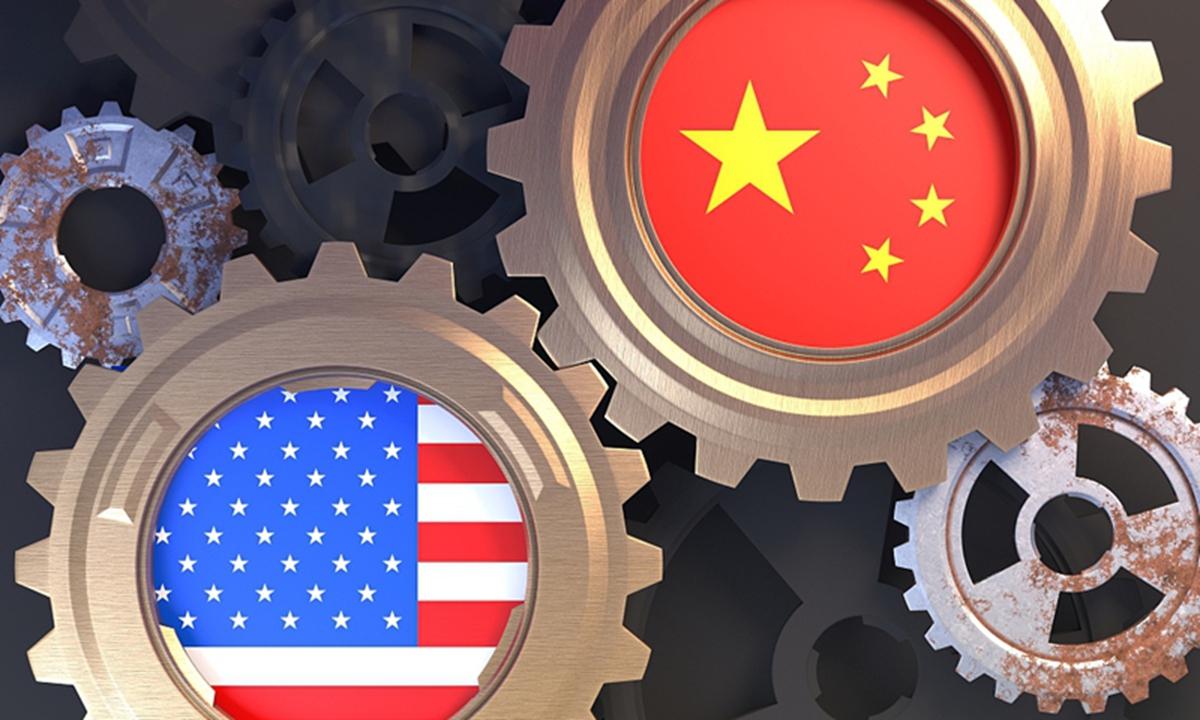
China US
Fifty years after US president Richard Nixon's historic visit to China in 1972, China-US trade has undergone tremendous changes in volume, quality and structure, but industry insiders say the mutually beneficial nature of the trade relations remains unchanged and will continue to be so, even as some in the US are clamoring for decoupling.
It was only after Nixon's visit, which helped kick-start bilateral diplomatic engagement that China-US trade began.
"In 1982, when I first arrived in the US, I heard that if an American citizen returned from overseas carrying in his bag Chinese goods worth more than $100 in pre-Nixon days, he was breaking the law and would end up in jail," Zhou Shijian, a former vice president of the China Chamber of Commerce of Metals, Minerals & Chemicals Importers and Exporters, said.
After the visit by Nixon, however, trade began to take off between the world's largest developing county and the world's largest developed country.
China-US trade volume grew to $750 billion in 2021 while bilateral investment reached $240 billion, Chinese State Councilor and Foreign Minister Wang Yi said as he delivered a video address at an event commemorating the 50th anniversary of the Shanghai Communiqué in Shanghai on Monday, noting that the communiqué ended the prolonged estrangement between China and the US and started the process of normalization of China-US relations.
The landscape of trade has undergone profound changes during the past five decades, but one thing remains the same as on the first day of trade resuming - trade benefits both China and the US, Zhou told the Global Times on Monday.
When trade in mineral resources began in the 1980s, China exported to the US rare metals and crude oil, Zhou said.
"If you consider crude oil, it seems odd given that today's China is the world's top consumer of oil," Zhou said. "But that's where we started."
With China's economic miracle after the reform and opening-up, exports of minerals changed completely. Not only did crude reverse from being exported to imported, but rare metals are exported as concentrates rather than raw materials, as China has upgraded its metallurgical and processing technology.
Shanghai, where the communiqué was announced, was also the place where the first imported Boeing airplane arrived and where General Motors started its first joint venture company in China.
More than that, companies such as Tesla are making products in China for the world, taking advantage of China's bonded zones that facilitate imports and exports.
In 2021, Tesla's Gigafactory in Shanghai delivered half of the company's global shipments, becoming a key base that allows its electric cars to export the fruits of China's high-end manufacturing to the world market, Tao Lin, vice president at Tesla, told the Global Times in a written interview.
Tao, who attended the commemoration meeting, noted that the Gigafactory in Shanghai exported 480,000 electric cars to customers around the world in 2021.
Tao said the company, a witness of China-US ties and a bridge of the two countries meeting each other halfway, is looking at a new phase of practical cooperation in the next 50 years.
Today, China is among the top export markets for US aircraft and soybeans, automobiles, integrated circuits and cotton. The US is the top export destination for Chinese electromechanical products, furniture, toys and shoes.
Veterans of China-US trade said recounting the history of the past 50 years bears significance today, as the two countries enter a period of fraught ties following the Donald Trump administration, with bilateral trade hindered by unilateral investigations, tariffs and more stringent export control measures imposed by the US.
The two countries both have concerns, with the US worried about its trade deficit with China, market access and the protection of intellectual property rights.
China, for its part, is concerned about US export restrictions, bad treatment of Chinese companies investing in the US, and abuse of trade remedy measures.
Experts are saying that the 1972 approach to seek common ground while reserving differences for China-US relations is still relevant today.
Robert Zoellick, former president of the World Bank and US trade representative, even called for a "New Shanghai Communiqué" that should light a path to pursue both competition and co-existence with China, in an opinion piece published by Bloomberg on Sunday.
To Zhou, the biggest revelation of Nixon's visit to China was that politicians should be reminded to handle China-US relations from the perspective of national interests rather than ideology, and that cooperation with China has not damaged the interests of the US. Zhou said that the US must uphold the one-China principle.
Experts also noted that efforts to decouple the two economies will bring losses for both.
"There is certainly a lot of talk about decoupling in the two economies, the two technology worlds," Jeffrey Lehman, vice chancellor of NYU Shanghai, told the Global Times on Monday. "My own hope is that to the extent there is decoupling that happens, it is kept limited. If the two countries no longer feel that they can engage in trade in certain areas or certain kinds of technologies, fine," Lehman said. "But don't extend that decoupling to all of the different areas in which the countries are made better off by working together."
Zhou said decoupling in trade is unrealistic and decoupling in technologies does harm to both countries.
Experts noted that China and the US have great scope of cooperation in areas including fighting terrorism, addressing climate change and fighting the pandemic, they said.




